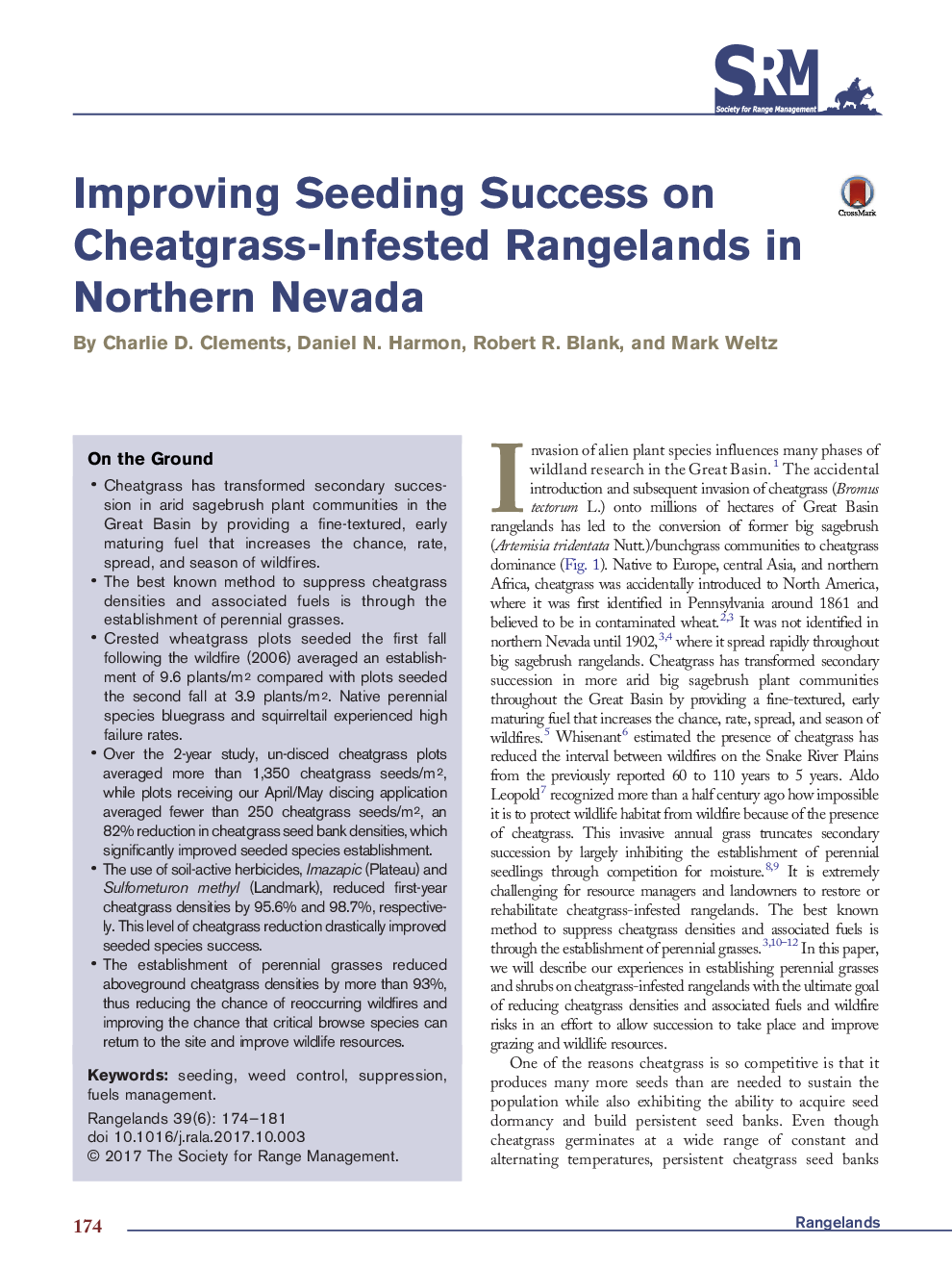| Article ID | Journal | Published Year | Pages | File Type |
|---|---|---|---|---|
| 8849684 | Rangelands | 2017 | 8 Pages |
Abstract
On the Ground
- Cheatgrass has transformed secondary succession in arid sagebrush plant communities in the Great Basin by providing a fine-textured, early maturing fuel that increases the chance, rate, spread, and season of wildfires.
- The best known method to suppress cheatgrass densities and associated fuels is through the establishment of perennial grasses.
- Crested wheatgrass plots seeded the first fall following the wildfire (2006) averaged an establishment of 9.6 plants/m2 compared with plots seeded the second fall at 3.9 plants/m2. Native perennial species bluegrass and squirreltail experienced high failure rates.
- Over the 2-year study, un-disced cheatgrass plots averaged more than 1,350 cheatgrass seeds/m2, while plots receiving our April/May discing application averaged fewer than 250 cheatgrass seeds/m2, an 82% reduction in cheatgrass seed bank densities, which significantly improved seeded species establishment.
- The use of soil-active herbicides, Imazapic (Plateau) and Sulfometuron methyl (Landmark), reduced first-year cheatgrass densities by 95.6% and 98.7%, respectively. This level of cheatgrass reduction drastically improved seeded species success.
- The establishment of perennial grasses reduced aboveground cheatgrass densities by more than 93%, thus reducing the chance of reoccurring wildfires and improving the chance that critical browse species can return to the site and improve wildlife resources.
- Cheatgrass has transformed secondary succession in arid sagebrush plant communities in the Great Basin by providing a fine-textured, early maturing fuel that increases the chance, rate, spread, and season of wildfires.
- The best known method to suppress cheatgrass densities and associated fuels is through the establishment of perennial grasses.
- Crested wheatgrass plots seeded the first fall following the wildfire (2006) averaged an establishment of 9.6 plants/m2 compared with plots seeded the second fall at 3.9 plants/m2. Native perennial species bluegrass and squirreltail experienced high failure rates.
- Over the 2-year study, un-disced cheatgrass plots averaged more than 1,350 cheatgrass seeds/m2, while plots receiving our April/May discing application averaged fewer than 250 cheatgrass seeds/m2, an 82% reduction in cheatgrass seed bank densities, which significantly improved seeded species establishment.
- The use of soil-active herbicides, Imazapic (Plateau) and Sulfometuron methyl (Landmark), reduced first-year cheatgrass densities by 95.6% and 98.7%, respectively. This level of cheatgrass reduction drastically improved seeded species success.
- The establishment of perennial grasses reduced aboveground cheatgrass densities by more than 93%, thus reducing the chance of reoccurring wildfires and improving the chance that critical browse species can return to the site and improve wildlife resources.
Related Topics
Life Sciences
Agricultural and Biological Sciences
Agricultural and Biological Sciences (General)
Authors
Charlie D. Clements, Daniel N. Harmon, Robert R. Blank, Mark Weltz,
